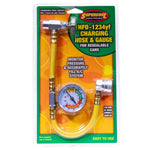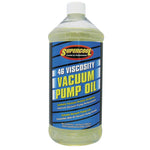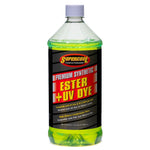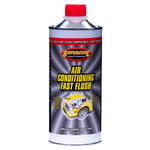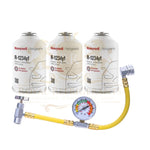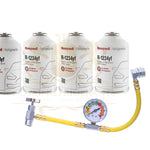You have no items in your shopping cart.

Properly filling an air conditioning system with R410A refrigerant is essential for maintaining efficient cooling performance and prolonging the lifespan of your AC unit. The process requires specific tools, expertise, and safety measures to ensure the refrigerant is filled correctly without causing harm to the system or the environment.
This article will guide you through the step-by-step process of filling R410A refrigerant in an air conditioning system, discuss important safety precautions, and highlight why it is crucial to use high-quality R410A refrigerant from reputable suppliers like Royal Refrigerants.
Why Choose R410A Refrigerant for Your AC System?
R410A refrigerant is widely used in modern air conditioning systems due to its efficiency and environmentally friendly properties.

Unlike older refrigerants such as R22, R410A does not contribute to ozone depletion and offers better heat transfer properties, enhancing the overall performance of your AC system.
Environmental Benefits of R410A Refrigerant
The R410A refrigerant is a hydrofluorocarbon (HFC) that does not contain chlorine, making it a safer alternative for the ozone layer. Its use in HVAC systems aligns with international regulations aimed at reducing the environmental impact of refrigerants.
Improved Efficiency and Cooling Performance
R410A refrigerant operates at a higher pressure than older refrigerants, allowing air conditioning systems to run more efficiently. This translates to faster cooling, lower energy consumption, and reduced utility costs, making it an ideal choice for residential and commercial cooling systems.
Essential Tools and Equipment Needed for Filling R410A Refrigerant
Before starting the refilling process, ensure you have the necessary tools and equipment to safely and efficiently add R410A refrigerant to your AC unit.
Manifold Gauge Set
A manifold gauge set is essential for monitoring refrigerant pressures during the filling process. When working with R410A refrigerant, use a gauge set specifically designed for high-pressure refrigerants to ensure accurate readings and safety.
Vacuum Pump
A vacuum pump is used to remove air and moisture from the AC system before adding new R410A refrigerant. This step is critical because moisture in the system can lead to acid buildup, potentially damaging the compressor and other components.
R410A Refrigerant Cylinder
Always use a certified R410A refrigerant cylinder from a trusted supplier like Royal Refrigerants. Ensure the cylinder is upright during the filling process and follow all safety guidelines to avoid accidents.
Safety Gear
Working with R410A refrigerant requires appropriate safety equipment, including gloves, goggles, and protective clothing to prevent contact with pressurized refrigerant or exposure to harmful gases.
Step-by-Step Process to Fill R410A Refrigerant in an AC System
Filling an AC unit with R410A refrigerant is a meticulous process that must be performed by a licensed HVAC technician. Here’s a detailed breakdown of each step involved.

Turn Off the AC Unit and Connect Gauges
Before starting, switch off the AC unit and allow it to settle. Connect the manifold gauge set to the service valves of the AC system. Attach the high-pressure hose to the high-pressure valve and the low-pressure hose to the low-pressure valve.
Evacuate the System Using a Vacuum Pump
Remove any air and moisture from the system using a vacuum pump. Run the pump until the gauge reads 500 microns or lower. This step is crucial for ensuring the R410A refrigerant fills a clean and moisture-free system, preventing system damage.
Prepare the R410A Refrigerant Cylinder
Position the R410A refrigerant cylinder upright and connect it to the manifold gauge set. Open the valve on the refrigerant cylinder and bleed the air out of the hose to avoid introducing contaminants into the system.
Charge the System with R410A Refrigerant
Begin adding the R410A refrigerant into the low-pressure side of the system. Monitor the pressure gauges to ensure the system does not exceed recommended pressure levels. The process requires careful control to avoid overcharging, which can lead to system inefficiency or damage.
Monitor and Adjust the Refrigerant Level
As the system charges, watch for the pressure levels and temperature readings on the manifold gauges. Once the system reaches the optimal charge level, close the valves on the R410A refrigerant cylinder and the manifold gauge set.
Test the AC System for Proper Operation
Turn the AC unit back on and allow it to run for several minutes. Check the cooling performance, temperature output, and ensure there are no leaks in the system. A properly filled system with R410A refrigerant will provide consistent and efficient cooling.
Common Mistakes to Avoid When Filling R410A Refrigerant
Filling R410A refrigerant requires attention to detail and adherence to safety protocols. Avoiding common mistakes can prevent system malfunctions and safety hazards.
Overcharging the System
Adding too much R410A refrigerant can cause high pressure in the system, leading to compressor failure or reduced cooling efficiency. Always refer to the manufacturer’s specifications for the correct refrigerant charge level.
Skipping the Vacuum Process
Failing to use a vacuum pump before charging the system can result in moisture and air mixing with the R410A refrigerant. This can create acidic conditions within the system, damaging the compressor and other components.
Safety Precautions When Handling R410A Refrigerant
Safety is paramount when working with R410A refrigerant. Proper handling techniques and safety gear can prevent injuries and system damage.

Wear Proper Personal Protective Equipment (PPE)
Always use gloves, goggles, and protective clothing when handling R410A refrigerant. The refrigerant is stored under high pressure, and exposure to the cold liquid or gas can cause frostbite.
Ensure Proper Ventilation
When filling R410A refrigerant, work in a well-ventilated area to avoid the buildup of refrigerant gases. If an indoor space is necessary, use ventilation fans to maintain a safe environment.
Additional Tips for Maintaining Your AC System with R410A Refrigerant
Proper maintenance of your AC system ensures optimal performance and longevity.
Regularly Check Refrigerant Levels
Monitor the R410A refrigerant levels regularly to maintain the cooling efficiency of your system. Low levels can indicate leaks or other issues that need professional attention.
Schedule Professional Inspections
Annual maintenance by a licensed HVAC technician can identify potential problems early and ensure your R410A refrigerant system remains in top condition.
FAQ
1. Can I fill R410A refrigerant myself?
No, only a certified HVAC technician should handle R410A refrigerant, as it requires special tools and expertise to avoid safety risks and system damage.
2. How often should I refill R410A refrigerant?
An AC system should not require regular R410A refrigerant refills unless there is a leak. Always consult a professional if your system needs frequent refills.
3. What happens if I overcharge my AC with R410A refrigerant?
Overcharging can lead to high pressure, causing compressor failure and reducing the efficiency of your AC system.
4. Is R410A refrigerant environmentally safe?
Yes, R410A is an HFC refrigerant that does not deplete the ozone layer, making it a safer choice for the environment.
5. Where can I buy high-quality R410A refrigerant?
Royal Refrigerants offers premium R410A refrigerant that meets all safety and quality standards, ensuring optimal performance for your HVAC system.
Conclusion
Filling an AC system with R410A refrigerant is a critical task that requires professional expertise and high-quality products. Choosing Royal Refrigerants ensures you get reliable, high-performance R410A refrigerant that keeps your AC system running efficiently and environmentally compliant. Don't hesitate to contact us anytime. We look forward to assisting you.
 English
English

